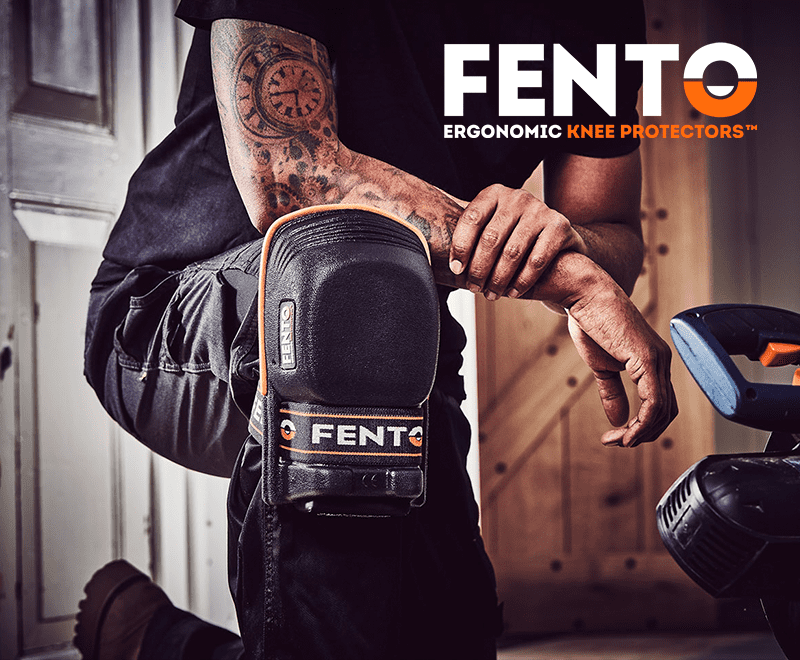In this month’s column, Billy Valler, managing director of W.B. Simpson & Sons, considers the issue of sustainability, which is a main focus of this issue of TSJ. It has also become a main focus for tiling contractors in their daily work – although, as Valler explains, the big decisions are often taken out of tiling contractors’ hands
In our business, the decisions made at a design stage are the ones that impact sustainability the most, and the room for manoeuvre from our point of view, as a tiling contractor, is limited.
We do have some input into the decision-making process when it comes to specification, but often the important decisions have already been made by architects and designers. When they choose what tile they are going to use, right at the beginning of a project, they are setting the path for the sustainability of the entire project.
When given the opportunity, we urge that key aspects are considered at the design stage of a project. Although we are not building designers, we believe we do have specialist knowledge about some of the sustainability issues associated with tiles and the way in which informed choices with regards to tiles can improve the environmental footprint of an entire project.
The considerations that need to be borne in mind at the design stage include the recycled content of the tile and where the tile is being made, since the transportation distance is a major factor, particularly since a lot of tiles nowadays are coming from India and the Far East.
Unfortunately we don’t really make floor tiles in this country anymore, so they are almost inevitably going to be imported.
Then we need to look at the type of factory the tiles are coming from – how environmentally friendly are these factories in terms of use of their energy usage. Currently almost all tiles are manufactured in gas-fired kilns, but I believe some producers are now looking at electric kilns. If this is achievable in large scale production, and especially if the factories can generate their own solar or wind energy, that would be an enormous step forward.
Next you can look at the thickness of the tile that is being specified. Nowadays you can get large format tiles of 6mm thickness, which are high quality and ideal for walls. With regard to floors, the specifier obviously has to consider the service requirements of the tile, but clearly a thin tile requires less material to manufacture than a 12mm tile and is also half the weight and allows more tiles on a pallet for transportation.
When it comes to working on site, an issue where contractors really can make a difference is on wastage, which is also the biggest site issue regarding sustainability. Nowadays because more large format tiles are used, we are seeing so much more wastage or off-cutting on each job. The larger the tile, the more likely you are to have a higher percentage of waste.
If you imagine tiling a room with 150mm square tiles, you might end up with a wastage rate of 10% or maybe even as little as 5%. On the other hand, if you were doing the job with large format tiles, you would expect wastage of 20% as a minimum, assuming an average setting out, although you could end up with 40% wastage or even higher. How high the waste figure is tends to be influenced by decisions made by the designers.
You can see the scale of the issue, if you imagine that the tile has to be manufactured, packaged, transported to this country and moved to site, only for a large proportion of it to be thrown away at the end of the job.
Of course we always try and manage wastage at a site level by reusing offcuts in other areas, and this is managed by our site management team. It is limited however by the fact that if you cut a tile twice, you are left with a bit in the middle which doesn’t have a factory edge, and that can’t really be used.
The ideal way is for the foreman to plan the most economical way of cutting the tiles in order to give usable off-cuts. But even if you manage to achieve that, you are still going to have a high level of wastage when you are working with large format tiles, and this is even worse if you are working with rectangular tiles or tiles with patterns. So, if we get 4 the opportunity to influence design decisions, we will encourage firstly that the most sustainable formats of tiles are purchased from suppliers as near as possible, and that setting is done in the most economical and sustainable way.
A further consideration with large format tiles is the quantity of adhesive required. If you compare a 1m square tile with a 150mm tile, you are going to need a thicker bed of adhesives for the larger tile, both on the wall and on the tile itself. You will need this because of the intolerances and undulations in the wall, whereas a small tile will follow the shape of the wall better.
From a sustainability point of view, I think the requirement for more adhesive when working with large format tiles is unfortunately going to outweigh any benefit you might get from using less grout.
As a sub-contractor, we are normally required to put our waste into skips which are then dealt with by the main contractor. Although packaging is recycled, along with the plastic floor protection products that are used on building sites, as far as I am aware, we have never done a project where the tile offcuts have been recycled. This remains a problem for the industry as a whole. Although some factories can reuse offcuts, would you in fact want to ship all your offcuts back to a factory overseas? Probably not. So, for the time being at any rate, these go into landfill.
The other area that we consider on site relates to adhesives and grouts, where we try to choose products which contain a higher level of recycled material. Manufacturers have been proactive in launching these in recent years, but it does require management on site. If there is 10% of the material left in the bottom of the bag, we need to make sure it doesn’t get thrown in the bin, but gets reused. That saves money as well. In fact a lot of the things associated with sustainability, particularly when it comes to cutting down waste, actually save businesses money as well. Attention to sustainability is a win-win situation for our sector.
www.wbsimpson.co.uk









